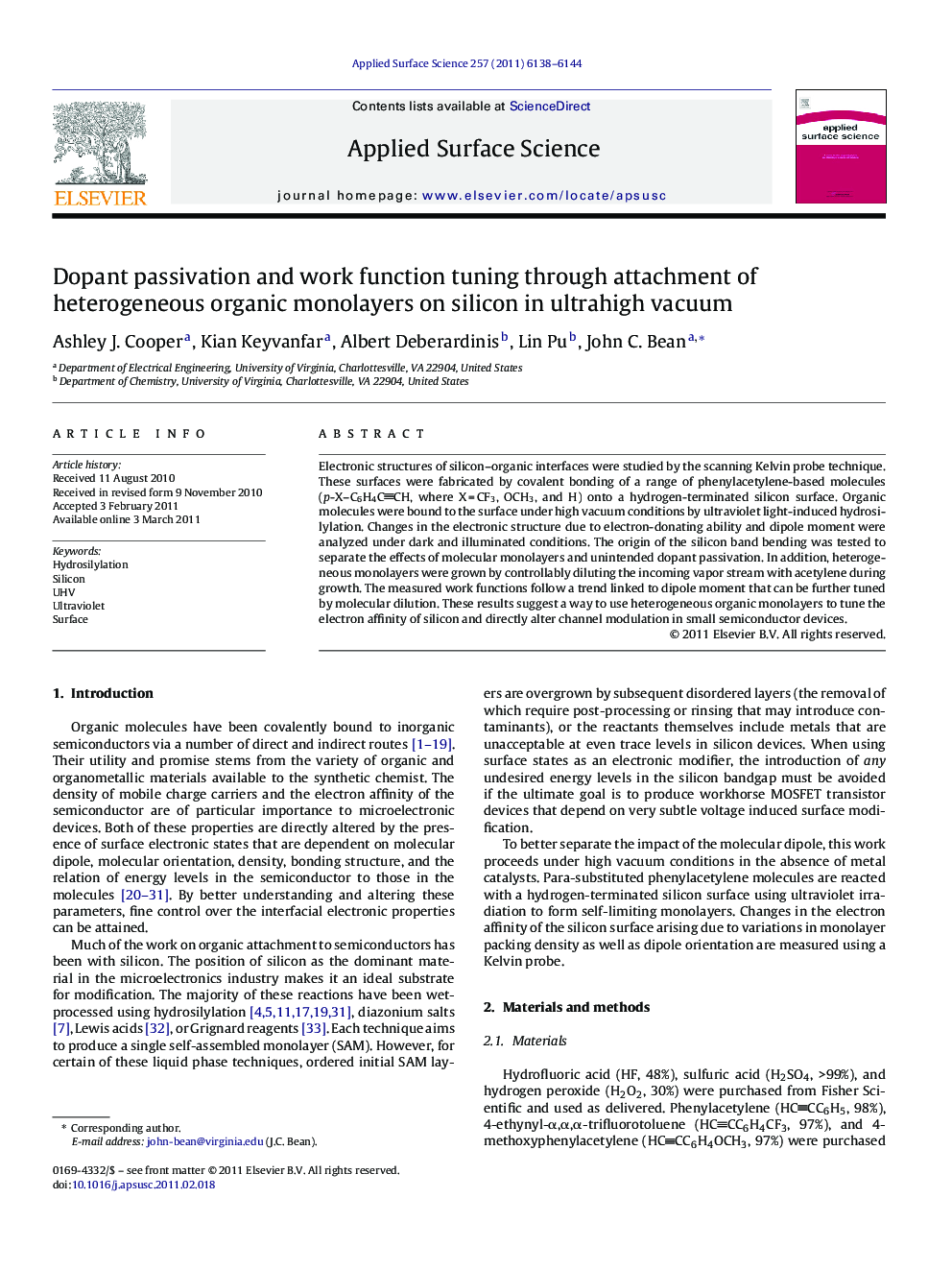| Article ID | Journal | Published Year | Pages | File Type |
|---|---|---|---|---|
| 5367689 | Applied Surface Science | 2011 | 7 Pages |
Electronic structures of silicon-organic interfaces were studied by the scanning Kelvin probe technique. These surfaces were fabricated by covalent bonding of a range of phenylacetylene-based molecules (p-X-C6H4CCH, where XÂ =Â CF3, OCH3, and H) onto a hydrogen-terminated silicon surface. Organic molecules were bound to the surface under high vacuum conditions by ultraviolet light-induced hydrosilylation. Changes in the electronic structure due to electron-donating ability and dipole moment were analyzed under dark and illuminated conditions. The origin of the silicon band bending was tested to separate the effects of molecular monolayers and unintended dopant passivation. In addition, heterogeneous monolayers were grown by controllably diluting the incoming vapor stream with acetylene during growth. The measured work functions follow a trend linked to dipole moment that can be further tuned by molecular dilution. These results suggest a way to use heterogeneous organic monolayers to tune the electron affinity of silicon and directly alter channel modulation in small semiconductor devices.
Research highlights⺠Heterogeneous organic monolayers on silicon surfaces. ⺠Ultra-high vacuum hydrosilylation under ultraviolet illumination. ⺠Band bending and contact potential track monolayer dipole and density. ⺠Hydrogen passivation of boron dopant atoms.
